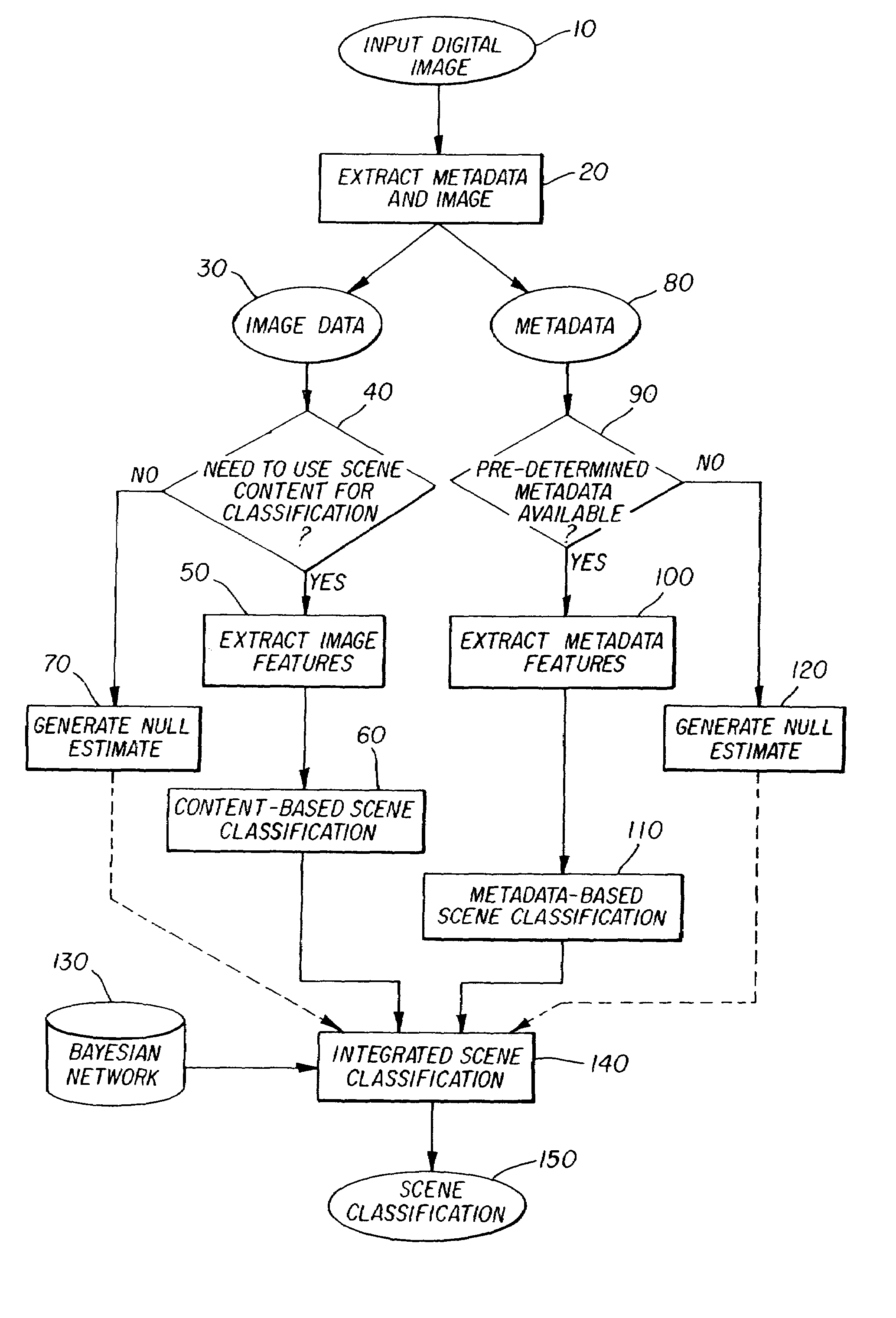Method for semantic scene classification using camera metadata and content-based cues
a technology of semantic scene and metadata, applied in the field of image processing, can solve the problems of difficult classification of unconstrained consumer images in general, difficult problem of so-called “query by example” and insufficient, and achieve the effect of robust image classification and extremely fast image classification
- Summary
- Abstract
- Description
- Claims
- Application Information
AI Technical Summary
Benefits of technology
Problems solved by technology
Method used
Image
Examples
Embodiment Construction
[0017]The present invention will be described as implemented in a programmed digital computer. It will be understood that a person of ordinary skill in the art of digital image processing and software programming will be able to program a computer to practice the invention from the description given below. The present invention may be embodied in a computer program product having a computer readable storage medium such as a magnetic or optical storage medium bearing machine readable computer code. Alternatively, it will be understood that the present invention may be implemented in hardware or firmware.
[0018]The present invention describes the use of camera metadata for scene classification, and in particular a preferred embodiment for solving the problem of indoor-outdoor scene classification. It is also demonstrated that metadata alone (which can be retrieved and processed using negligible computing resources) can be used as an “Ultra-Lite” version of the indoor-outdoor scene clas...
PUM
 Login to View More
Login to View More Abstract
Description
Claims
Application Information
 Login to View More
Login to View More - R&D
- Intellectual Property
- Life Sciences
- Materials
- Tech Scout
- Unparalleled Data Quality
- Higher Quality Content
- 60% Fewer Hallucinations
Browse by: Latest US Patents, China's latest patents, Technical Efficacy Thesaurus, Application Domain, Technology Topic, Popular Technical Reports.
© 2025 PatSnap. All rights reserved.Legal|Privacy policy|Modern Slavery Act Transparency Statement|Sitemap|About US| Contact US: help@patsnap.com



